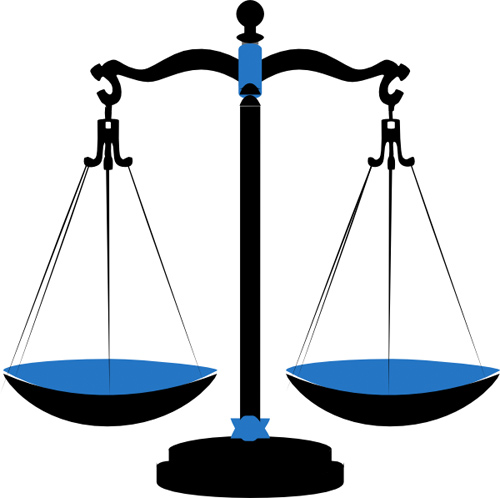
Ramesh, Hamid win almost 1 million in damages

Finally justice has been served. A civil court case that lasted for almost 6 years and now the verdict/judgment has been handed down. Co-plaintiffs Ramesh Jiwatram Bhawnani and Abdul Hamid bin Abas won the biggest libel suit in Brunei Darussalam against the Indian Chamber of Commerce as the 1st defendant and Mohamed Zackiriah Nazeer Ahmad & 23 others as the 2nd defendant. They are: Mohamed Zackiriah Nazeer Ahmad, Jamnu Punjabi, Abdul Malick Mohamed Batcha, Abdul Rahim Kamaldeen, Mohamed Zubair Hamim Basheer, Mohamed Abdulla Inamulla @ Yunus, Venugopal Jayakumar, Abdul Packir Maideen, Punjabi Vishnu Tarachand, Noorsa Ahmad Sultan Noor Mohamed, Dawoo Batcha Mohd Jafarullah, Shaikh Mohamed Saburdeen, Abdul Sheik Dawood Munaff, Muthiah Chettiarmani, Vadakoot Sankunni Azhutchan Ramesh Chandaran, Poondiyar Shaik Peer Mohamed Sheik Dawood, Asiqurahman bin Haji Abdul Haleem, Haji Badurudeen S/O Tn Mohamed Ismail, Ubayathullah Hamim Basheer, Hidhayatulla bin Tajudden, Mohamed Hussain Mohamed Ali, Sulaimanayub Khan, Haji Mohamed Ali and Haji Mohamed Asraf @ Abdul Kader Asraf Ali.
The defendants are to pay BND 650,000 and BND 300,000 in damages to Ramesh Jiwatram Bhawnani and Abdul Hamid bin Abas respectively. This was announced in the written judgment prepared by Judge James Kerr Findlay, Judicial Commissioner.
How it all happened?
5th April 2010 – Indian Chamber of Commerce sent a letter addressed to the Indian High Commissioner to Brunei Darussalam, publishing defamatory matters on Ramesh Jiwatram Bhawnani and Abdul Hamid bin Abas.
29th November 2010 – Indian Chamber of Commerce sent a letter addressed to the Indian High Commissioner to Brunei Darussalam and Ramesh alleged he was libelled in that letter.
2012 – The case was brought to the court by Ramesh Jiwatram Bhawnani and Abdul Hamid bin Abas and were represented by Pg Izad and Too Shu Vun of Messrs Pengiran Izad and Lee.
2018 – During the 6 years, the case went back and forth until it reached the High Court. The defendants lost the case and the written judgment was handed by 24th March 2018.
What was the content in the letters?
It mentioned that Ramesh Jiwatram Bhawnani “has recently been increasingly involved in various malicious activities which in our opinion warrants investigation by the appropriate body in India”. It was also mentioned that Ramesh was engaged in money laundering and was a “Mafia style gangster”.
The other letter dated 29th November 2010 urged “stern action” against Ramesh as the defendants were “pretty sure that something worthwhile will be unearthed”. This letter repeated the serious allegation that Ramesh’s “business activities are in actual fact a sham to cover his illegal money-laundering operations”.
The second plaintiff Abdul Hamid bin Abas was alleged in the first letter where he had abused his position as an officer with the Ministry of Foreign Affairs and Trade.
In their defence
Back in 2014, at the Court of Appeals, the defendants claimed that the civil suit libel action “could not be maintained as the court was not competent to entertain a suit relating to communications relating to matters of State”. This was based on the provision of the Vienna Convention on Diplomatic Relations (the Convention).
The Court of Appeals discussed the question of “whether a letter written by a private person to a diplomatic mission may be adduced in evidence” and considered the Vienna Convention on Diplomatic Relations 1961.
In the decision, the court said the letters referred to in the libel suit are admissible.
“The Convention does not assist the appellants who have failed at this stage to show that either copy delivered anonymously to the respondents was taken from the original in the archive,” the Court of Appeals said.
“They have also failed to show that the respondents were complicit in the act of making either copy. On the evidence as it stands at present we find that the letters are admissible.”
The Indian Chamber of Commerce’s motion to strike out the civil suit libel action was earlier dismissed by the registrar and then by the Chief Justice before the matter was brought up to the three-panel judges at the Court of Appeal and then recently to the High Court.
From this case, it seemed that the defendants ) 1st defendant and Mohamed Zackiriah Nazeer Ahmad & 23 others as the 2nd defendant) were seeking for immunity.
Fast forward to the present moment
In the high court, the defendants wanted the judge to believe that the defamatory statements were published only to the Indian High Commissioner himself then. The second defendant told the judge the the letters were hand delivered and no copies were kept by the first defendant. Later in his evidence, he retracted this and said the first defendant had kept copies but he could not remember where they were. It is not possible to believe that the High Commission (then) on receiving these letters and even assuming he opens official letters personally, kept them to himself. The letters by the defendants are not marked as personal, confidential or otherwise to restrict their circulation.
In his judgement, Justice Findlay said “Benjamin Franklin said that three can keep a secret, if two of them are dead,” adding that human nature is such that statements like those made by the defendants, especially when they contain juicy gossip are bound to be spread. He also said that they were spread because the second plaintiff, who was a credible witness, told him of people speaking to him of the statements in the letters, where one of them asked him why he was working for a money-launderer and a gangster.
The defendants wanted the judge to find that there was no malice involved in making the defamatory statements. Judge replied by saying, “Frankly, it is difficult to think of a case in which malice is more obvious than this tone. The defendants admit that they had no basis at all for making defamatory statements. The second defendant was totally unable to give any explanation for this vicious attack on the characters of the plaintiffs. Malice must be found where defendants make defamatory statements knowing full well that there is no justification for making them.”
“I find as a fact that he was motivated by spite and malice and seeking to harm the plaintiffs. Apart from anything else, one only has to read the defamatory letters to detect that they reek of malice. My conclusion is that the defendants are liable to the first plaintiff for the publication of the defamatory matter contained in the 5 April 2010 and the first defendant and the fourth defendant are liable to him for the publication of the defamatory matter contained in the letter of 29 November 2010. I also conclude that the defendants are liable to the second plaintiff for the defamatory matter contained in the letter of 5 April 2010.
The judge concluded, “There remains the matter of the quantum of damages. I regard this as a serious case of defamation. The baseless allegations by the defendants were of the upmost gravity. It is difficult to think of a case more serious than the statement that the first plaintiff, a prominent businessman in Brunei, was a professional criminal or that the second plaintiff, as a senior government official, was corrupt and prepared to abuse his powers. It cannot be otherwise than that the plaintiffs suffered a loss of reputation, anxiety and stress. An aggravating factor is that the defendants sought to present a case that the defamatory statements were true until the case was on trial and continued to argue that there was no malice.
The judge also made the following awards of damages in favour of the plaintiffs. Justice Findlay also granted judgement in favour of the plaintiffs in these terms against all the defendants, jointly and severally, the one paying, the others to be absolved. The plaintiffs are entitled to their costs, to be taxed if not agreed. Furthermore, the judge will also consider interest if he receives a written submission on this issue.


Amount payable to Abdul Hamid bin Abas
Rano’s thoughts: This is the biggest defamation (libel) case in Brunei Darussalam with a total of BND 950,000. Previously it was a case for defamation where Abrahams, Davidson and Co. won a case against the defunct News Express back in 2002. The plaintiff was also represented by Pg. Izad and & Lee and the total award was BND 550,000. Finally after six years, the case can put to rest after a series of hearings in the court and even through the court of appeal. It’s the final straw but the defendants still have one card to play – appeal to the High Court.
It is important for all of us to know that defamation – libel and slander – can be damaging to one’s reputation. When you defame someone, it means you claim something that is false and untrue as they are no evidence to support that claim. In this case, the Indian Chamber of Commerce claimed that Ramesh Jiwatram Bhawnani is a “Mafia style gangster” in a written document and this will fall under libel category.
So ladies and gentlemen, be careful what you write online. All assumptions and accusations can be brought to justice. I know they are many keyboard warriors out there especially on reddit. So think twice before you post or simply don’t post at all.

